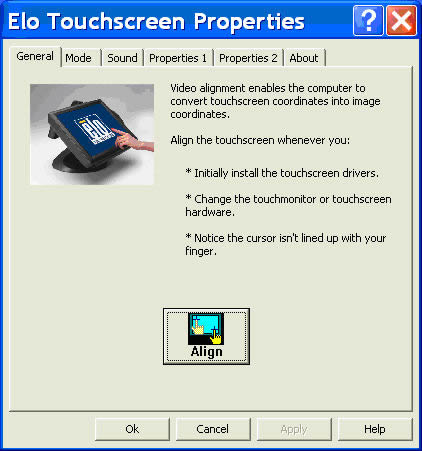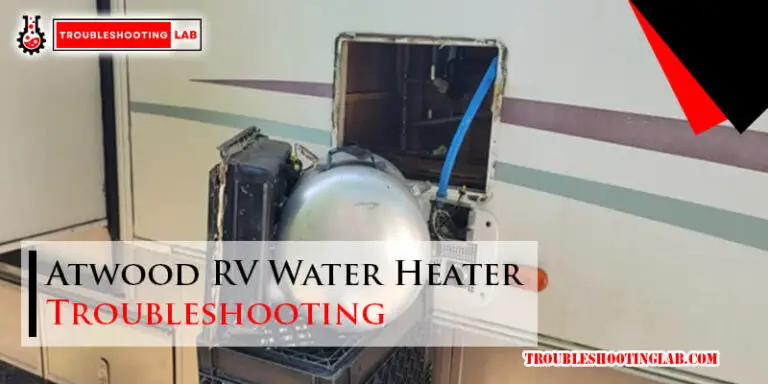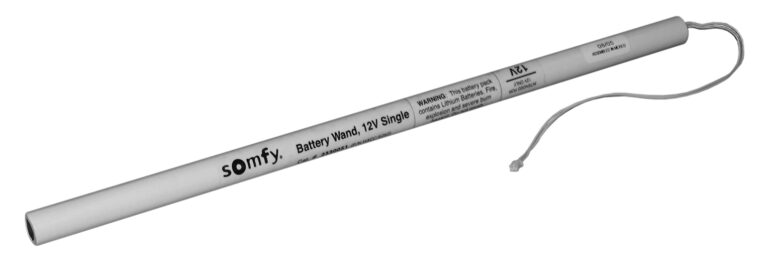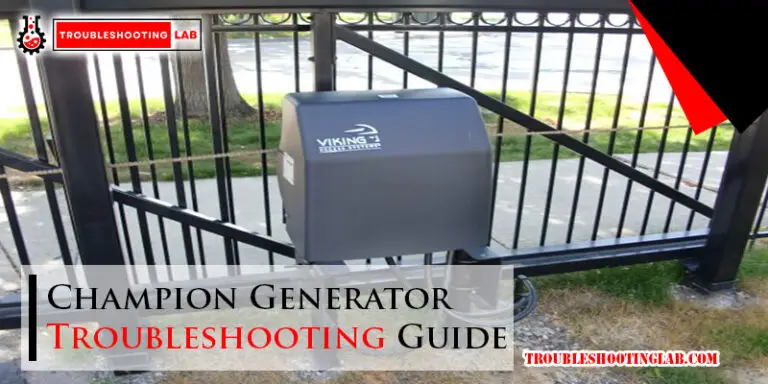Goodman Ac Troubleshooting Guide: Fix AC Running But Not Cooling!
A Goodman AC troubleshooting guide in Austin, Texas, United States, provides solutions to common issues with Goodman air conditioners. This guide covers topics such as troubleshooting the compressor, checking for short circuits, cleaning the evaporator and condenser coils, and addressing problems with the fan and thermostat.
It also explains the importance of regularly changing the air filter and provides step-by-step instructions for cleaning the flame sensor. Additionally, the guide mentions troubleshooting videos available on YouTube for further assistance. If your Goodman AC unit is not cooling properly, it may be due to a faulty thermostat, compressor, or clogged coils.
Regular maintenance and troubleshooting can help ensure optimal performance and extend the lifespan of your Goodman air conditioner.

Reasons Why Your Goodman Ac Is Running But Not Cooling
Clogged Air Filter
One common reason why your Goodman AC might be running but not cooling is a clogged air filter. Over time, dust, dirt, and debris can accumulate in the air filter, restricting airflow and inhibiting the cooling process. This can cause the evaporator coil to freeze up, resulting in reduced cooling performance.
To troubleshoot this issue, locate the air filter in your Goodman AC unit and check if it appears dirty or clogged. If it does, remove the air filter and clean or replace it as necessary. Regularly cleaning or replacing the air filter every one to three months can help prevent clogs and maintain efficient cooling.
Dirty Evaporator And Condenser Coils
Another possible reason for your Goodman AC running but not cooling is the dirty evaporator and condenser coils. Over time, these coils can accumulate dirt, dust, and other debris, which reduces their ability to transfer heat. As a result, your AC may struggle to cool the air effectively.
To resolve this issue, you can clean the evaporator and condenser coils. Start by turning off the power to your AC unit. Then, using a soft brush or a vacuum cleaner with a brush attachment, gently remove any dirt or debris from the coils. Be careful not to damage the delicate fins on the coils. If the coils are heavily soiled, you may need to use a coil cleaner recommended by Goodman or consult a professional for assistance.
Low Refrigerant Levels
If your Goodman AC is still running but not cooling, it could be due to low refrigerant levels. Refrigerant is responsible for absorbing heat from the indoor air and releasing it outside, allowing your AC to provide cooling. If the refrigerant levels are low, the AC system may struggle to cool effectively.
To address this issue, it is crucial to have a qualified HVAC technician inspect your Goodman AC system. They will be able to locate and fix any refrigerant leaks and recharge the system with the correct amount of refrigerant.
Faulty Compressor
A faulty compressor can also cause your Goodman AC to run but not cool. The compressor is responsible for pressurizing the refrigerant and circulating it throughout the system. If the compressor is malfunctioning or not working at all, it will affect the cooling performance of your AC unit.
If you suspect a faulty compressor, it is recommended to contact a professional HVAC technician for a thorough inspection and repair.
Electrical Issues Or Short Circuit
Electrical issues or a short circuit can prevent your Goodman AC from cooling properly, even if it is running. Problems such as a tripped circuit breaker, blown fuse, or faulty wiring can disrupt the electrical flow to the AC unit, causing it to underperform or fail to cool altogether.
If you are comfortable working with electrical systems, you can check the circuit breaker or fuse box to see if any breakers have tripped or fuses have blown. Resetting a tripped breaker or replacing a blown fuse may resolve the issue. However, if you are uncertain or uncomfortable with electrical work, it is best to call a professional electrician or HVAC technician to diagnose and fix the problem safely.
In conclusion, there are several reasons why your Goodman AC may be running but not cooling. Clogged air filters, dirty evaporator and condenser coils, low refrigerant levels, faulty compressors, and electrical issues or short circuits can all contribute to this problem. By understanding these potential causes, you can troubleshoot and resolve the issue, restoring the efficient cooling performance of your Goodman AC system.
How To Troubleshoot A Clogged Air Filter
A clogged air filter is a common issue that can affect the performance of your Goodman AC unit. When the air filter becomes blocked with dirt and debris, it restricts airflow and reduces cooling efficiency. In this troubleshooting guide, we will walk you through the steps to identify and resolve a clogged air filter problem.
Step 1: Turn Off The AC Unit
To ensure your safety, it is important to turn off the AC unit before attempting any troubleshooting. Locate the power switch on the main electrical panel and switch it off to disconnect the power supply.
Step 2: Locate And Remove The Air Filter
The air filter is typically located behind the return air grille or on the air handler unit. Remove the grille or access panel to gain access to the air filter. Carefully pull out the filter from its housing.
Step 3: Inspect The Air Filter For Dirt And Debris
Inspect the air filter for any signs of dirt, debris, or dust buildup. A clogged air filter may appear dirty and restrict airflow. If the filter is visibly dirty, it is likely the cause of the problem.
Step 4: Clean Or Replace The Air Filter
If the air filter is reusable and washable, gently clean it using a vacuum cleaner or by rinsing it under running water. Allow the filter to completely dry before reinstalling it. If the air filter is disposable, it is recommended to replace it with a new one.
Step 5: Turn On The Ac Unit And Check For Cooling
After cleaning or replacing the air filter, turn on the AC unit and check if it is cooling properly. Ensure that the airflow is not restricted and that the unit is producing cool air. If the issue persists, it may indicate a different problem that requires professional assistance.
How To Clean The Evaporator And Condenser Coils
Regularly cleaning the evaporator and condenser coils of your Goodman AC unit is essential for maintaining its efficiency and prolonging its lifespan. Dust and debris can accumulate on these coils over time, reducing their ability to transfer heat effectively. In this guide, we will walk you through the steps to clean your coils and ensure your AC unit is operating at its best.
Step 1: Turn Off The AC Unit
Before you start cleaning the coils, it is important to turn off the AC unit to avoid any accidents or injuries. Locate the circuit breaker box and switch off the power supply to the AC unit.
Step 2: Locate The Evaporator And Condenser Coils
The evaporator coil is typically located inside the air handler unit, while the condenser coil is located in the outdoor unit. Remove the access panels to gain access to these coils.
Step 3: Use A Soft Brush To Remove Dust And Debris
Using a soft brush, gently brush off any visible dust and debris from the coils. Be careful not to apply too much pressure, as it could damage the delicate fins of the coils.
Step 4: Spray Coil Cleaner And Let It Sit
Once you have removed the loose debris, spray a coil cleaner directly onto the coils. Allow the cleaner to sit for a few minutes to break down any stubborn dirt or grime.
Step 5: Rinse The Coils With Water
After the coil cleaner has had enough time to work, rinse off the coils with a gentle stream of water. Start from the top and work your way down, ensuring that all the dirt and debris are washed away.
Step 6: Turn On The Ac Unit And Check For Cooling
Finally, turn on the AC unit and check if the cooling has improved. If you notice a significant difference in the airflow or cooling, then cleaning the coils was successful. However, if the issue persists, it may be a sign of a larger problem, and you should contact a professional HVAC technician for further troubleshooting.
How To Recharge Refrigerant Levels
When your Goodman AC unit is not cooling effectively, it may be due to low refrigerant levels. Recharging the refrigerant can help restore proper cooling and improve the performance of your AC unit. Here is a step-by-step guide on how to recharge the refrigerant levels in your Goodman AC unit:
Step 1: Turn Off The AC Unit
Before you begin the refrigerant recharge process, make sure to turn off the AC unit. This is crucial for your safety and to avoid any potential damage to the system.
Step 2: Locate The Refrigerant Lines And Service Valve
Next, locate the refrigerant lines on your Goodman AC unit. These lines will typically be made of copper and can be found near the evaporator coil and condenser unit. Look for the service valve, which is usually located on the larger refrigerant line.
Step 3: Attach A Refrigerant Gauge
Attach a refrigerant gauge to the service valve on the refrigerant line. This gauge will help you monitor the pressure levels of the refrigerant during the recharge process.
Step 4: Add Refrigerant If The Levels Are Low
If the refrigerant gauge shows that the levels are low, it’s time to add more refrigerant. Follow the manufacturer’s instructions on the refrigerant canister to ensure proper usage and avoid overcharging.
Step 5: Monitor The Pressure And Stop When Recommended Levels Are Reached
While adding refrigerant, monitor the pressure gauge closely. Stop adding refrigerant when the pressure reaches the recommended levels specified by the manufacturer. Overcharging can be harmful to the AC system.
Step 6: Turn On The Ac Unit And Check For Cooling
Once you have recharged the refrigerant levels, turn on the AC unit and check for cooling. Ensure that the air coming out of the vents is cool and the system is functioning properly.
How To Identify And Fix A Faulty Compressor
A faulty compressor is one of the most common issues that can arise with a Goodman AC unit. The compressor is responsible for compressing the refrigerant and circulating it through the system, so if it is not functioning properly, your AC unit may not cool effectively. In this section, we will guide you through the steps to identify and fix a faulty compressor.
Step 1: Turn Off The AC Unit
The first step in troubleshooting a faulty compressor is to turn off the AC unit. This ensures your safety during the inspection and repair process. Locate the main power switch or circuit breaker and switch it off to cut off the power supply to the AC unit.
Step 2: Listen For Unusual Sounds Or Vibrations
Once the AC unit is turned off, listen carefully for any unusual sounds or vibrations coming from the compressor. A faulty compressor may produce loud noises such as grinding, buzzing, or rattling sounds. Vibrations or shaking can also indicate a problem with the compressor.
Step 3: Check The Compressor For Physical Damage Or Leaks
Visually inspect the compressor for any physical damage or leaks. Look for signs of oil or refrigerant leaks around the compressor. Physical damage can include dents, cracks, or corrosion on the compressor casing. Any visible damage or leaks should be addressed, as they can affect the overall performance of the compressor.
Step 4: Test The Compressor With A Multimeter
To further troubleshoot the compressor, you can use a multimeter to test for electrical continuity. Set the multimeter to the resistance or ohms setting, and carefully place the probes on the terminals of the compressor. A reading of infinity or no continuity indicates a faulty compressor, and it will need to be replaced.
Step 5: Replace The Faulty Compressor If Necessary
If the previous steps indicate that the compressor is faulty, it will need to be replaced. Contact a qualified technician or HVAC professional to safely remove the old compressor and install a new one. Attempting to replace the compressor yourself can be dangerous and may void the warranty on your AC unit.
Step 6: Turn On The Ac Unit And Check For Cooling
After replacing the faulty compressor, turn on the AC unit and check if it is cooling properly. Allow the system to run for a while and monitor the temperature to ensure that the compressor is functioning correctly. If the cooling is still inadequate, it may be necessary to further troubleshoot other components of the AC system.
How To Troubleshoot Electrical Issues Or Short Circuits
Dealing with electrical issues or a short circuit can be frustrating, especially when it affects your Goodman AC unit. However, troubleshooting these problems is possible with a step-by-step approach. By following these steps, you can identify and resolve electrical issues, ensuring your AC unit operates smoothly. Remember to prioritize safety during the troubleshooting process, and if you’re unsure or uncomfortable, it’s best to call a professional technician.
Step 1: Turn Off The AC Unit
Before proceeding with any troubleshooting steps, ensure your safety by turning off the AC unit’s power supply. This can be done by switching off the AC unit’s main power switch or disconnecting it from the circuit breaker.
Step 2: Check The Circuit Breaker Or Fuse Box
Inspect the circuit breaker panel or fuse box to see if any breakers have tripped or fuses blown. A tripped breaker or blown fuse is a common cause of electrical issues. If you find a tripped breaker or blown fuse, move on to the next step.
Step 3: Reset Or Replace The Tripped Breaker Or Blown Fuse
Reset the tripped breaker by switching it off and then back on. If the breaker trips again immediately after resetting, there may be an underlying electrical issue that requires further investigation. In this case, consider calling a professional technician to diagnose and fix the problem. If you find a blown fuse, it will need to be replaced with one of the same amperage.
Step 4: Inspect Wiring For Loose Connections Or Damage
Examine the wiring connections of your AC unit for any signs of loose connections, frayed wires, or other damage. Loose connections can cause electrical issues, while damaged wires pose a safety hazard. If you notice any loose connections or damaged wiring, refrain from attempting to repair it yourself. Instead, call a professional technician to handle the repairs.
Step 5: Test Electrical Components With A Multimeter
Use a multimeter to test the electrical components of your AC unit, including capacitors, relays, and contactors. This can help identify faulty components that may be causing electrical issues. If you’re unfamiliar with using a multimeter or interpreting the readings, it’s best to contact a professional technician for assistance.
Step 6: Call A Professional Technician If Electrical Issues Persist
If you have followed the previous steps and the electrical issues or short circuit in your Goodman AC unit persist, it’s time to call in a professional technician. Continuing to troubleshoot or attempt repairs without the necessary expertise can lead to further damage or safety hazards. An experienced technician will have the knowledge and equipment to diagnose and fix electrical issues in your AC unit efficiently and safely.
Frequently Asked Questions
Do all Goodman AC units have a Reset button?
Yes, all Goodman AC units have a reset button. The reset button is usually a small red rubber button.
Why Is My AC unit Fan Running But Not Cooling?
There are several reasons why your AC unit fan is running but not cooling. It could be a thermostat issue, a compressor problem, or clogged evaporator coils. Dust and debris can also obstruct proper cooling. Check these factors to diagnose the problem.
Why is my Goodman air conditioner not blowing hard?
Your Goodman air conditioner may not be blowing hard due to various reasons. It could be an issue with the thermostat, compressor, or evaporator coils. Another possibility is that it may be clogged with dust and debris. Check and clean these components to improve airflow, and contact a professional if needed.
How Do You Reset A Goodman?
Goodman air conditioning units have a reset button that is usually a small red rubber button. If your AC unit is running but not cooling, it could be due to issues with the thermostat, compressor, or evaporator coils, or it could be clogged with dust and debris.
“How Do I Troubleshoot My Goodman Ac Unit?”
To troubleshoot your Goodman AC unit, check the thermostat settings, inspect the air filters, clean the condenser coils, and ensure proper airflow in your home.
Conclusion
If your Goodman AC unit is running but not cooling, there could be a few possible reasons. It could be due to issues with the thermostat, the compressor, or the evaporator coils. Another common problem is a clogged unit, which can be caused by dust and debris.
To troubleshoot these issues, refer to the comprehensive troubleshooting guide provided in this blog post. By following the steps outlined, you can resolve many common AC problems and ensure your Goodman unit is functioning optimally. Remember to always consult a professional if you are unsure or need further assistance.







I have a Goodman wall unit air conditioner that is not blowing cool air. When turned on it runs for 5 to 8 minutes and shuts off and there are 3 blinking lights constantly. They are the auto, timer and operational lights. We can’t find an error reference for this proble.
thank you
Hi, It sounds like your Goodman wall unit air conditioner might be experiencing an issue that’s causing it to shut down after a few minutes and display the blinking lights. The three blinking lights (auto, timer, and operational) typically indicate a specific error code or issue, though it can be tricky to pinpoint without a manual.
Here are a few steps you can try to troubleshoot the problem:
If none of these steps resolve the issue, it might be best to contact a professional technician who can diagnose and fix the problem more accurately. Air conditioners have many components, and sometimes the issue can be due to something more complex like a refrigerant leak or a faulty sensor.
Hope this helps!